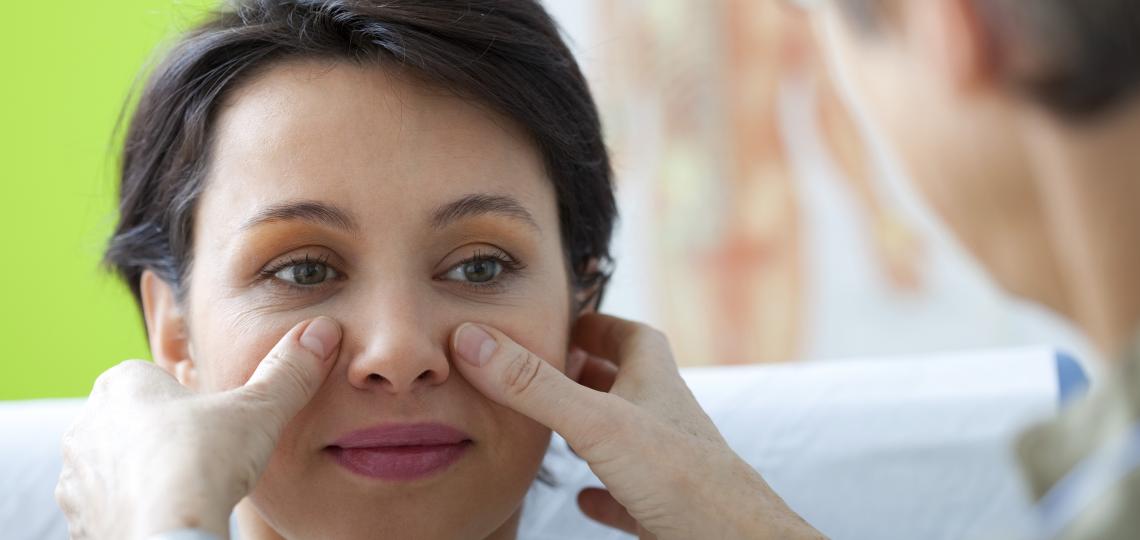
Rhinoplasty is surgery to reshape the nose. It can make the nose larger or smaller; change the angle of the nose in relation to the upper lip; alter the tip of the nose; or correct bumps, indentations, or other defects in the nose.
Overview
During rhinoplasty, the surgeon makes incisions to access the bones and cartilage that support the nose. The incisions are usually made inside the nose so that they are invisible after the surgery. Depending on the desired result, some bone and cartilage may be removed, or tissue may be added (either from another part of the body or using a synthetic filler). After the surgeon has rearranged and reshaped the bone and cartilage, the skin and tissue is redraped over the structure of the nose. A splint is placed outside the nose to support the new shape of the nose as it heals.
Rhinoplasty may be done using general or local anesthesia. It is usually done as an outpatient procedure but sometimes requires a 1-night stay in the hospital or surgery center.
Surgeons who do rhinoplasties typically have training in either plastic surgery, otolaryngology (ear, nose, and throat specialty), or both.
How well does rhinoplasty work?
The results of rhinoplasty may be minor or significant, depending on what kind of correction you want. It is important that you and your plastic surgeon agree on the goals of the surgery. If your expectations are realistic and your plastic surgeon shares them, he or she will probably be able to give you the results you want.
The results of rhinoplasty are permanent, although subsequent injury or other factors can alter the nose's appearance. Cosmetic surgery should only be done on a fully developed nose. Complete development has usually occurred by age 15 or 16 in females and by age 17 or 18 in males. If surgery is done before this time, continued development of the nose can alter the surgical results and possibly cause complications.
What are the risks of rhinoplasty?
You can always expect temporary swelling and bruising around the eyes and nose after rhinoplasty. Other problems that may occur include:
- Bleeding
- Injury or holes to your septum (the wall that separates your nostrils)
- Skin problems, including breakdown of skin tissue (skin necrosis) and irritation from the tape and bandaging
- Infection
- Preventive antibiotics may be given after surgery to reduce the risk of infection
- Serious nasal blockage caused by swelling inside the nose
- Complications of anesthesia
It is also possible that the cosmetic results of the surgery will not be what you wanted.
© 2016-2019 Healthwise, Incorporated.

Performed by Dr. Krista Olson. Nose surgery that included turbinate reduction, septoplasty (deviated septum repair) and rhinoplasty (cosmetic nose surgery) to enhance appearance and airflow through the nose.

Performed by Dr. Krista Olson. Nose surgery that included turbinate reduction, septoplasty (deviated septum repair) and rhinoplasty (cosmetic nose surgery) to enhance appearance and airflow through the nose.
Meet Our Team

Marco Maricevich, M.D.
Appointments: (713) 798-6141
Dr. Maricevich is a fellowship-trained plastic surgeon who specializes in all kinds of reconstructive and aesthetic procedures of the face, body and extremities as well as skin cancer and non-surgical aesthetic treatments.

Krista Lee Olson, M.D., FACS
Appointments: (713) 798-3223
Dr. Olson’s practice covers all realms of facial plastic and reconstructive surgery including rhinoplasty, blepharoplasty and facial rejuvenation. She is board certified in both Facial Plastic and Reconstructive Surgery and Otolaryngology - Head and Neck Surgery.

Sunthosh Kumar Sivam, M.D.
Appointments: (713) 798-3223
Dr. Sivam is board certified in Otolaryngology-Head and Neck Surgery. He has particular interests in nasal surgery (rhinoplasty), facial rejuvenation, facial reconstruction following excision of skin cancers, repair of facial fractures, and facial reanimation.

Sebastian Winocour, M.D.
Appointments: (713) 798-6141
Dr. Winocour specializes in aesthetic surgery. His practice includes breast surgery and body contouring including abdominoplasty, thigh lift and liposuction.

Jessie Yu, M.D.
Appointments: (713) 798-6141
Dr. Yu is a fellowship-trained reconstructive microsurgeon and provides a comprehensive spectrum of plastic surgical care, ranging from cosmetic to trauma surgical needs. Dr. Yu has specialized interests in complex free flap reconstruction after breast, head and neck, and orthopedic surgeries, as well as the surgical treatment of lymphedema.








